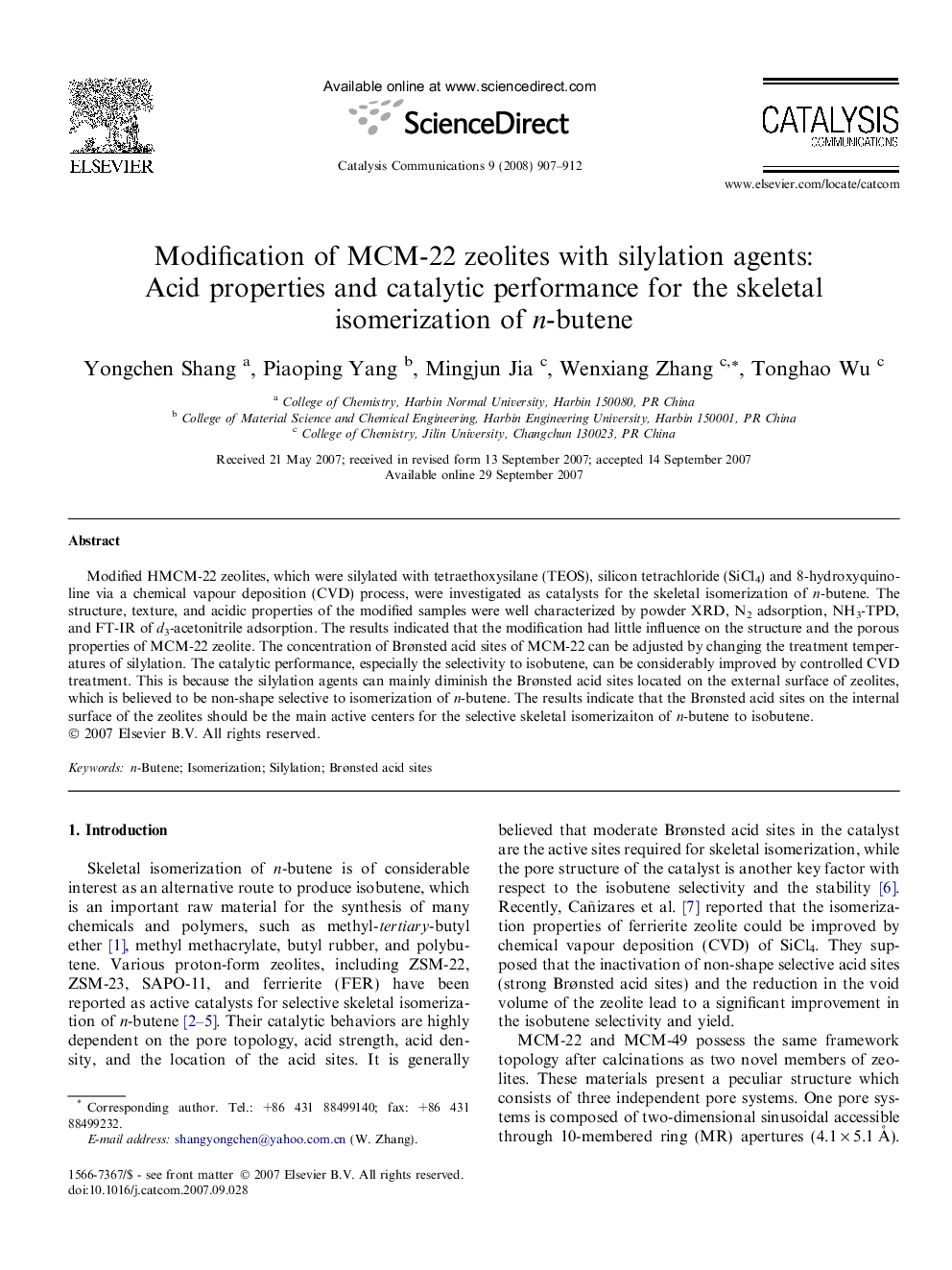| Article ID | Journal | Published Year | Pages | File Type |
|---|---|---|---|---|
| 52276 | Catalysis Communications | 2008 | 6 Pages |
Modified HMCM-22 zeolites, which were silylated with tetraethoxysilane (TEOS), silicon tetrachloride (SiCl4) and 8-hydroxyquinoline via a chemical vapour deposition (CVD) process, were investigated as catalysts for the skeletal isomerization of n-butene. The structure, texture, and acidic properties of the modified samples were well characterized by powder XRD, N2 adsorption, NH3-TPD, and FT-IR of d3-acetonitrile adsorption. The results indicated that the modification had little influence on the structure and the porous properties of MCM-22 zeolite. The concentration of Brønsted acid sites of MCM-22 can be adjusted by changing the treatment temperatures of silylation. The catalytic performance, especially the selectivity to isobutene, can be considerably improved by controlled CVD treatment. This is because the silylation agents can mainly diminish the Brønsted acid sites located on the external surface of zeolites, which is believed to be non-shape selective to isomerization of n-butene. The results indicate that the Brønsted acid sites on the internal surface of the zeolites should be the main active centers for the selective skeletal isomerizaiton of n-butene to isobutene.
